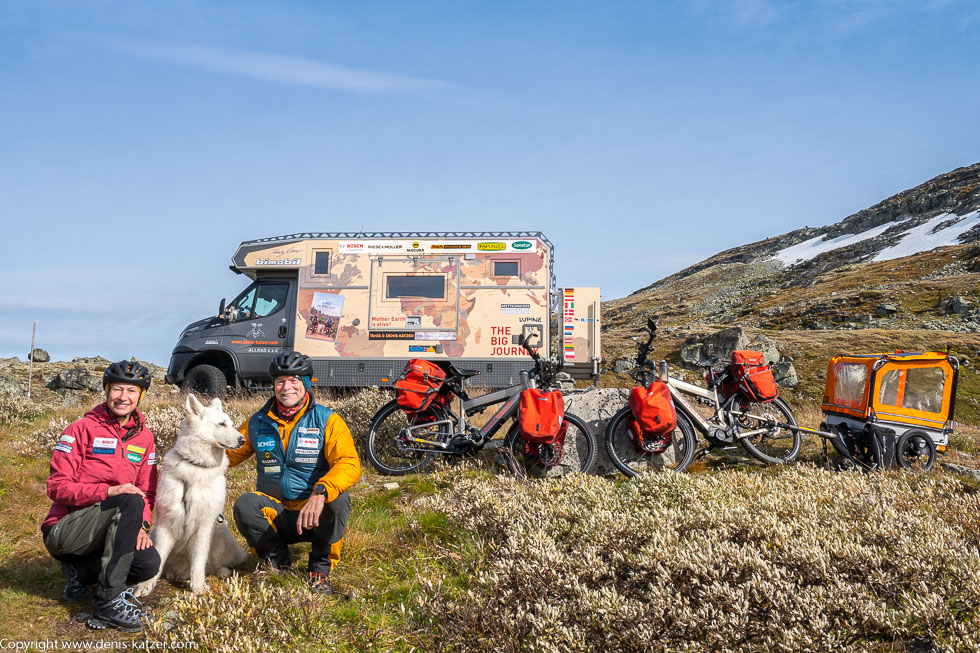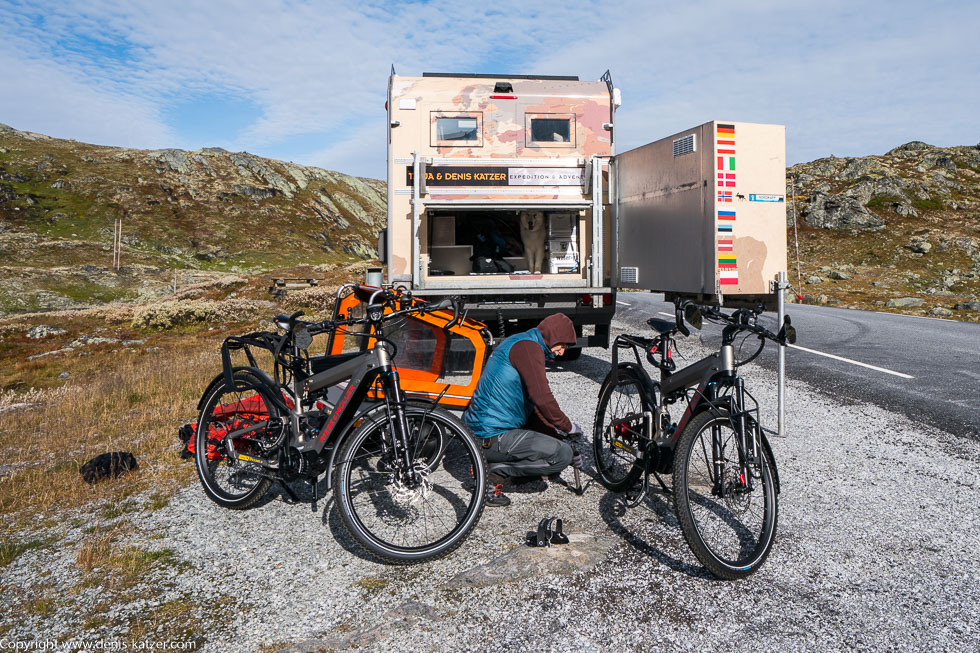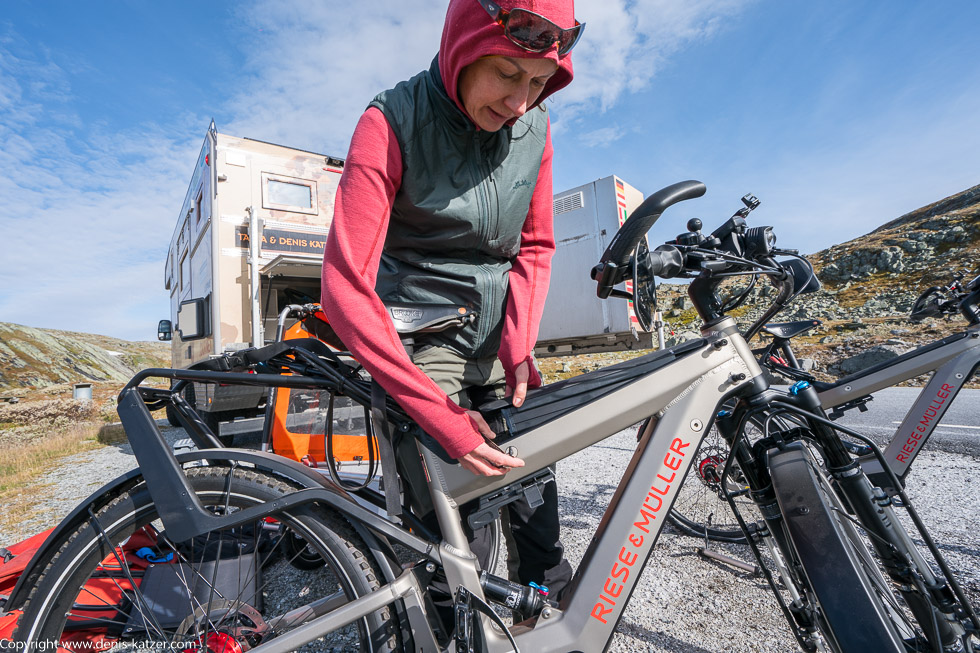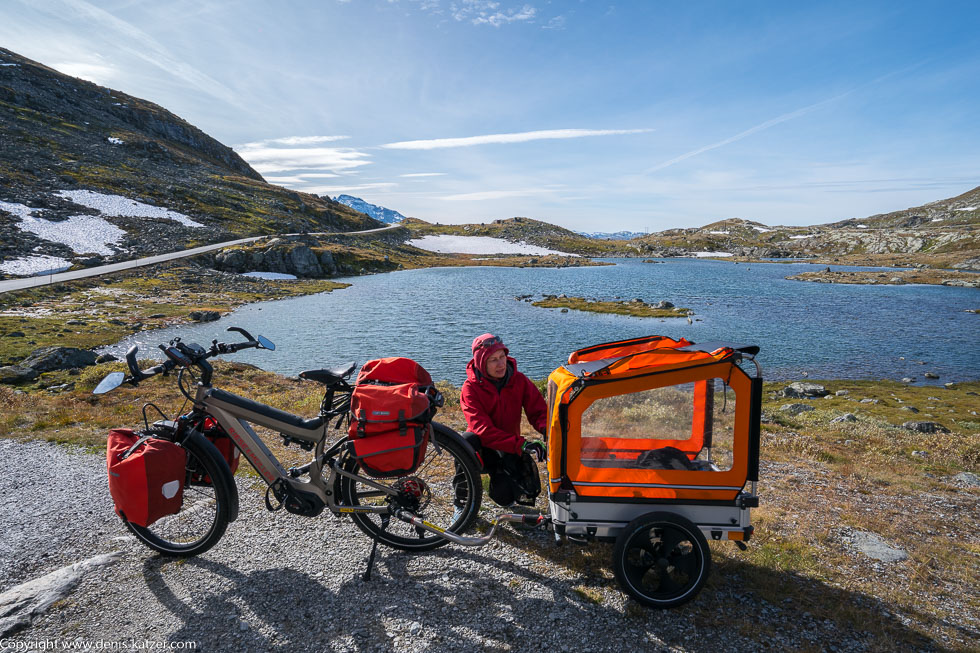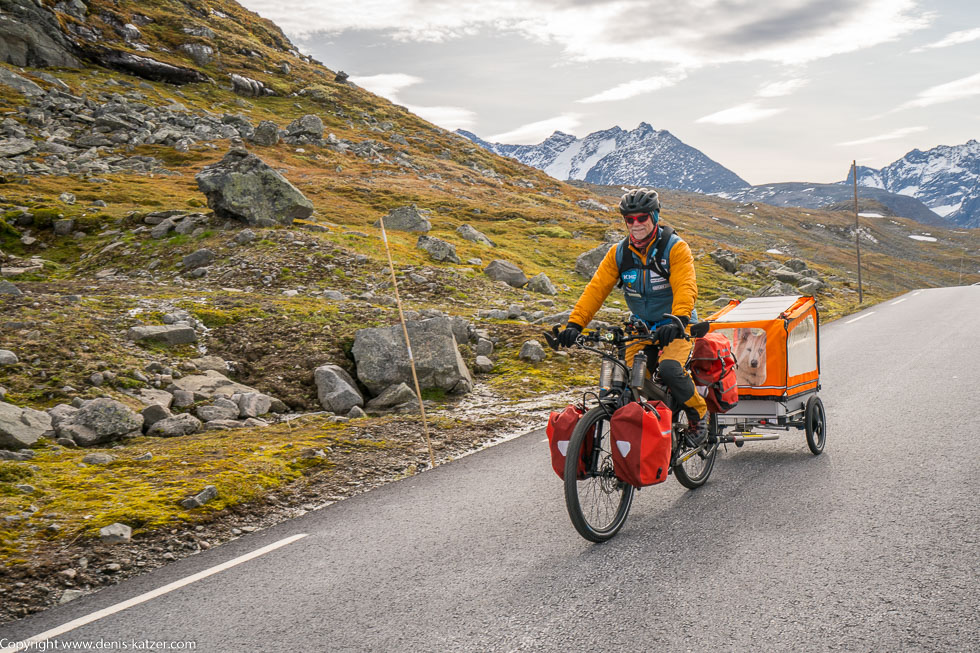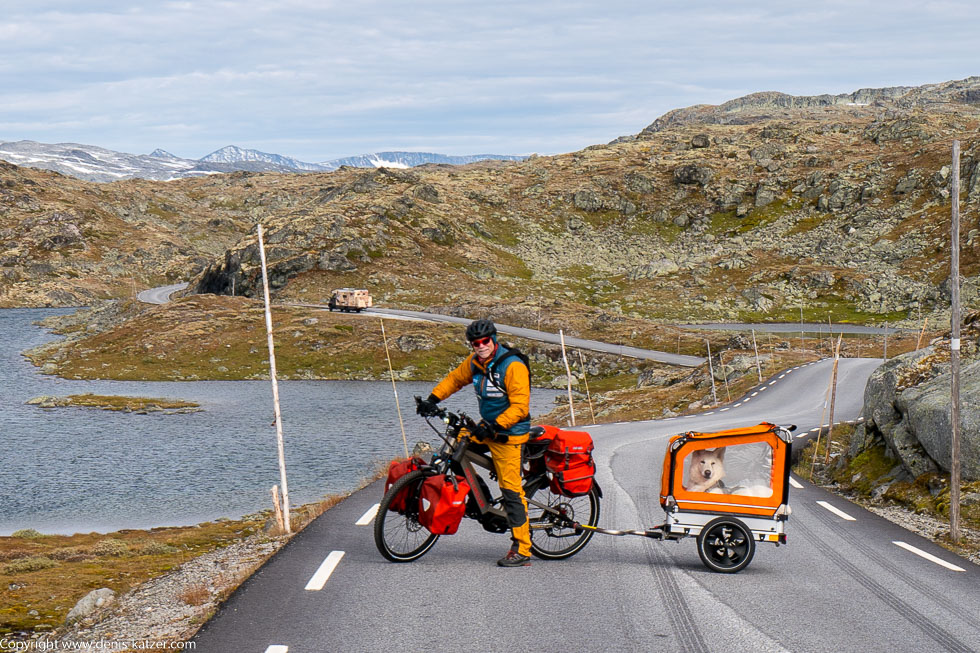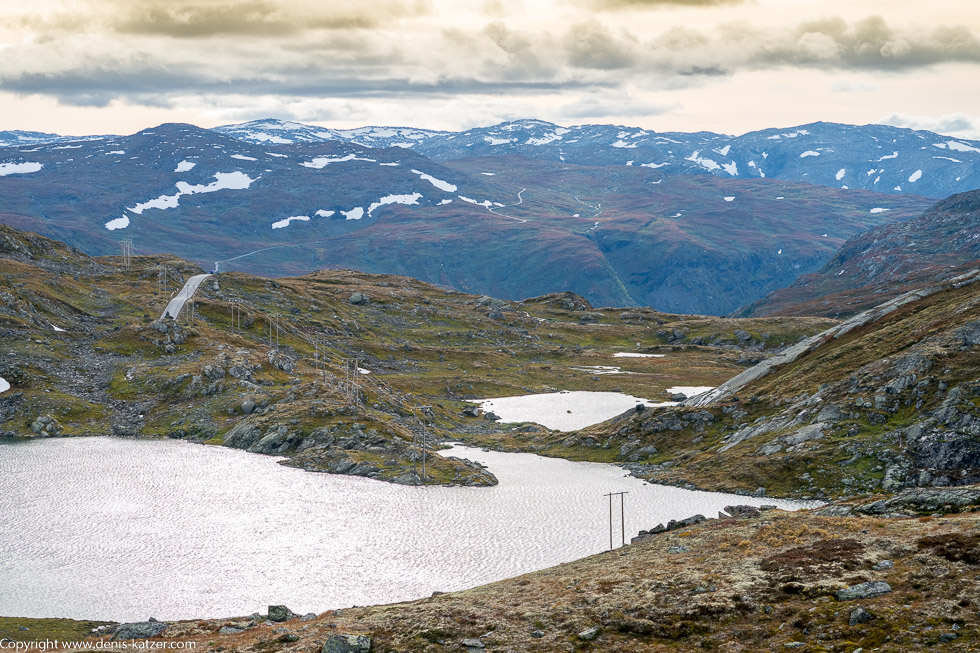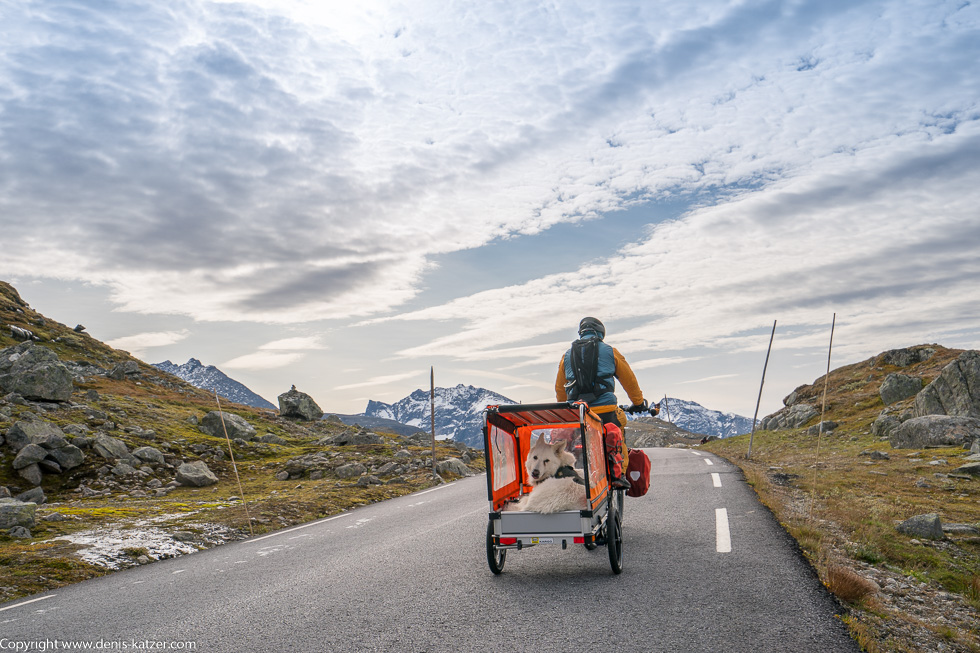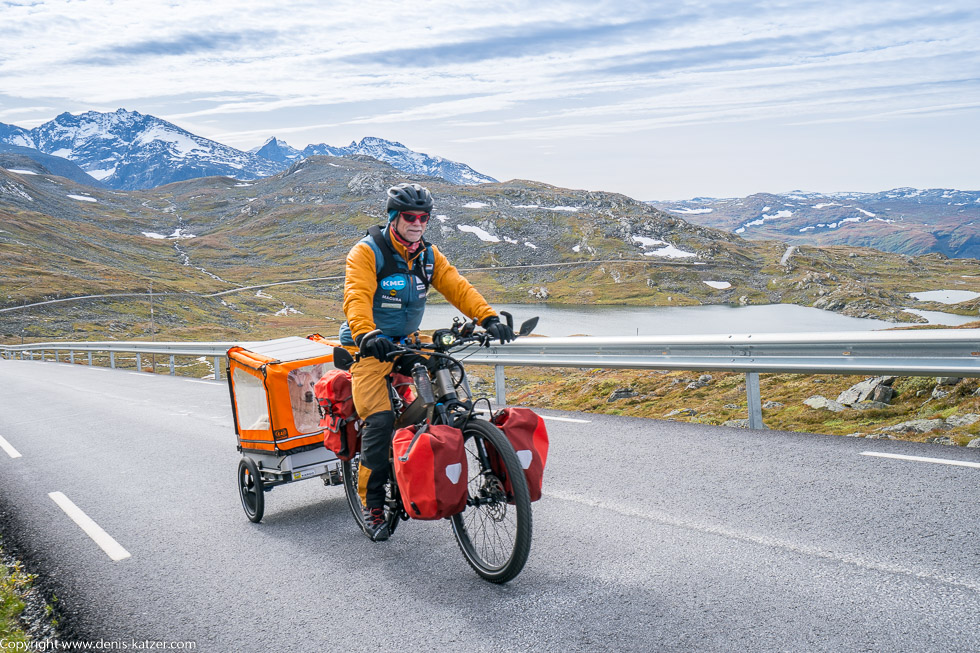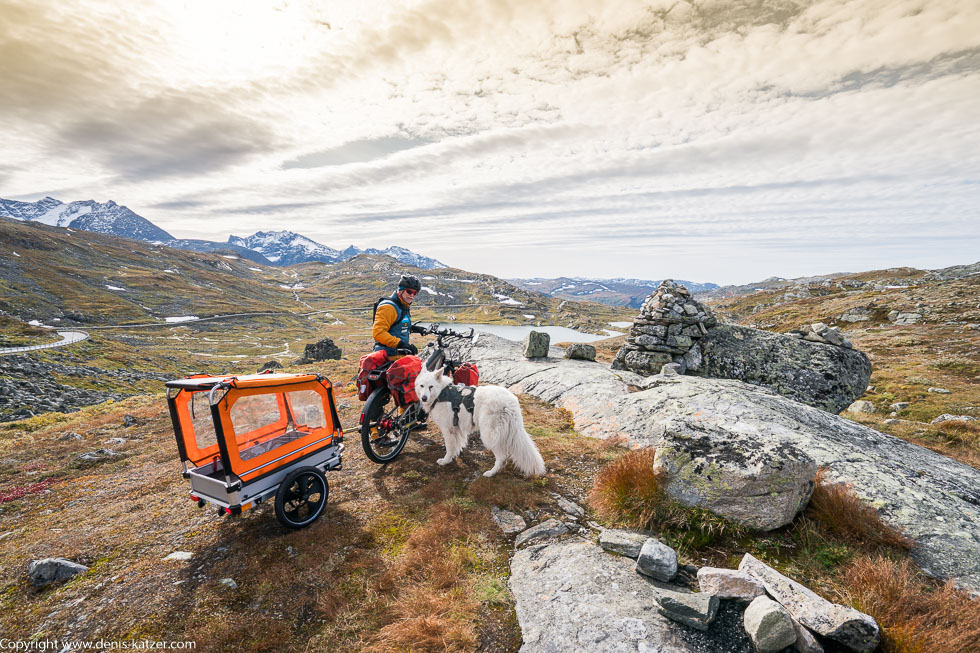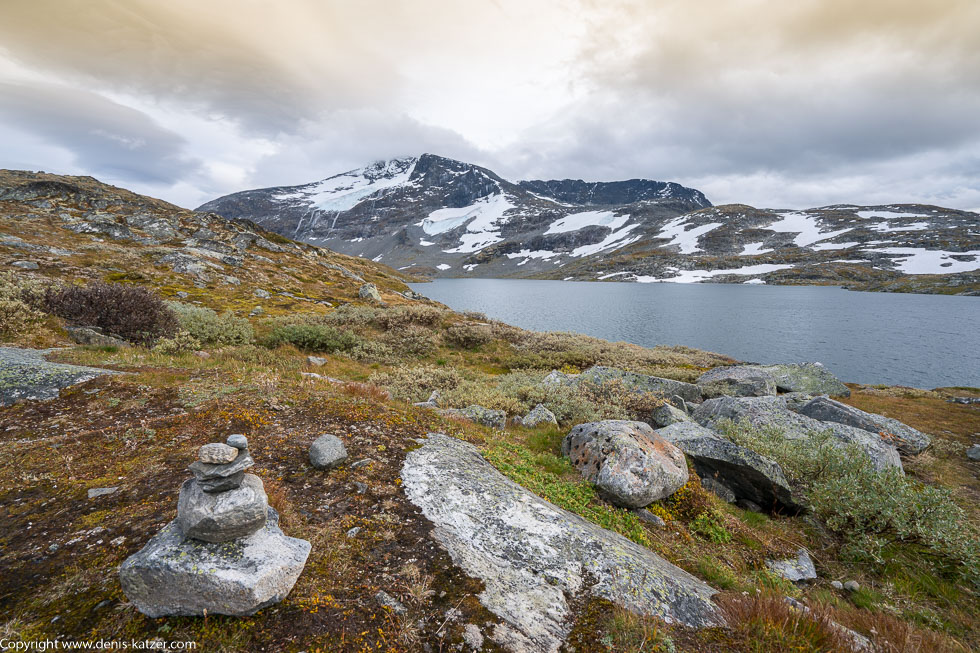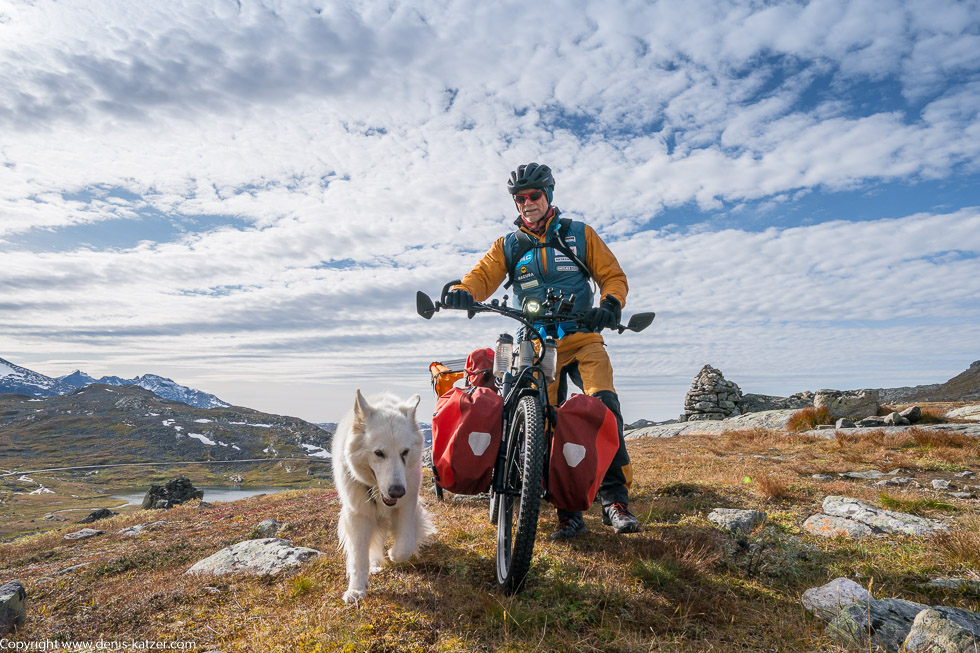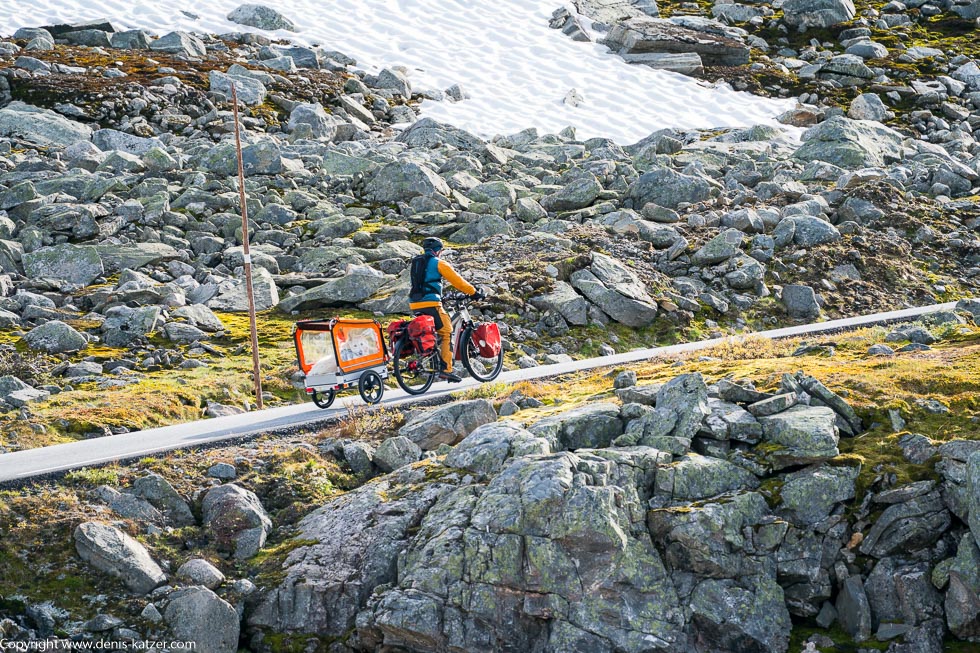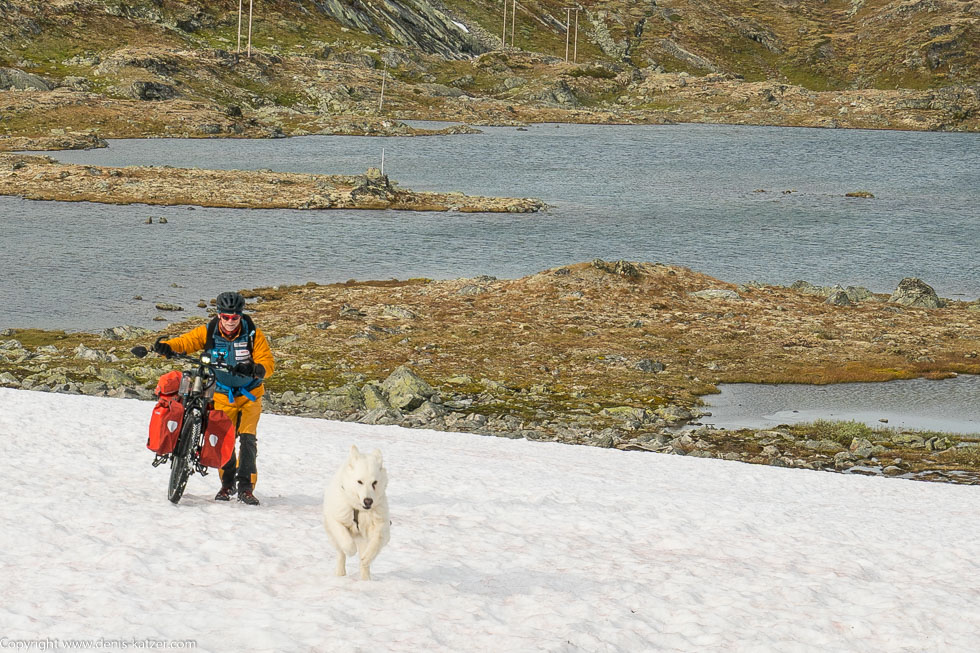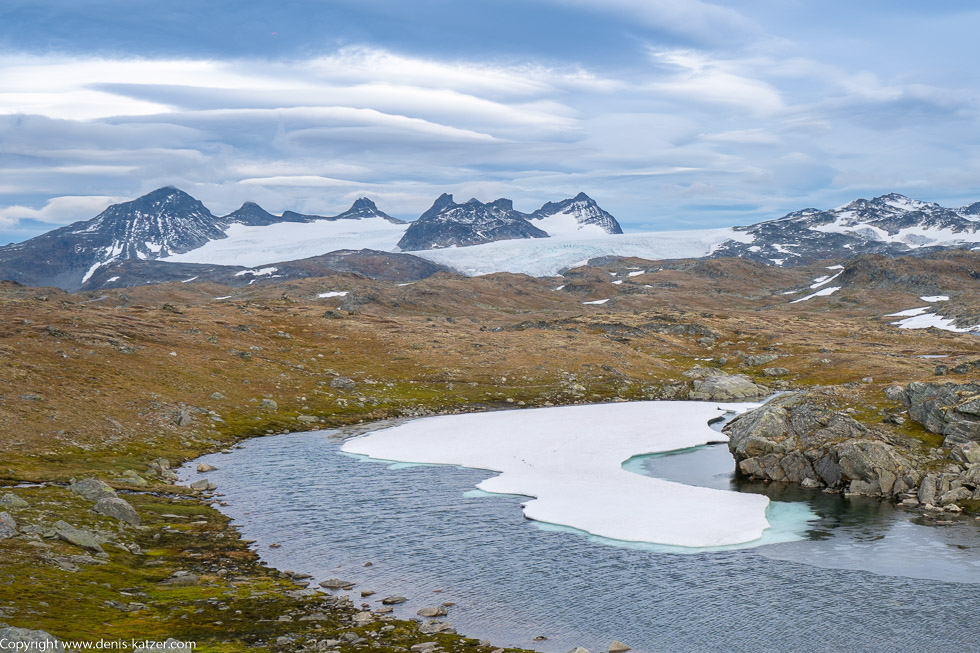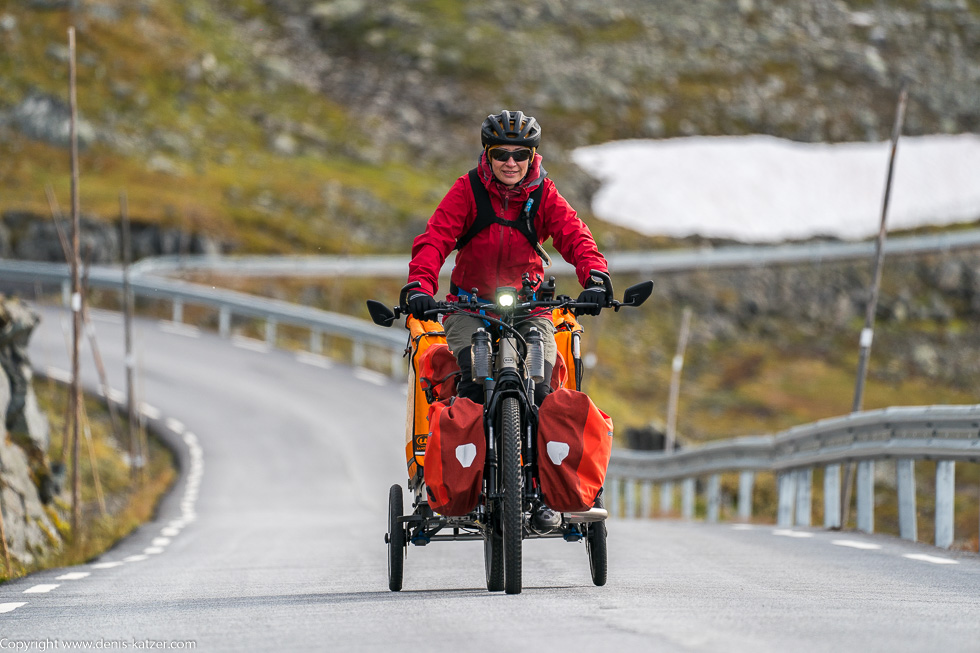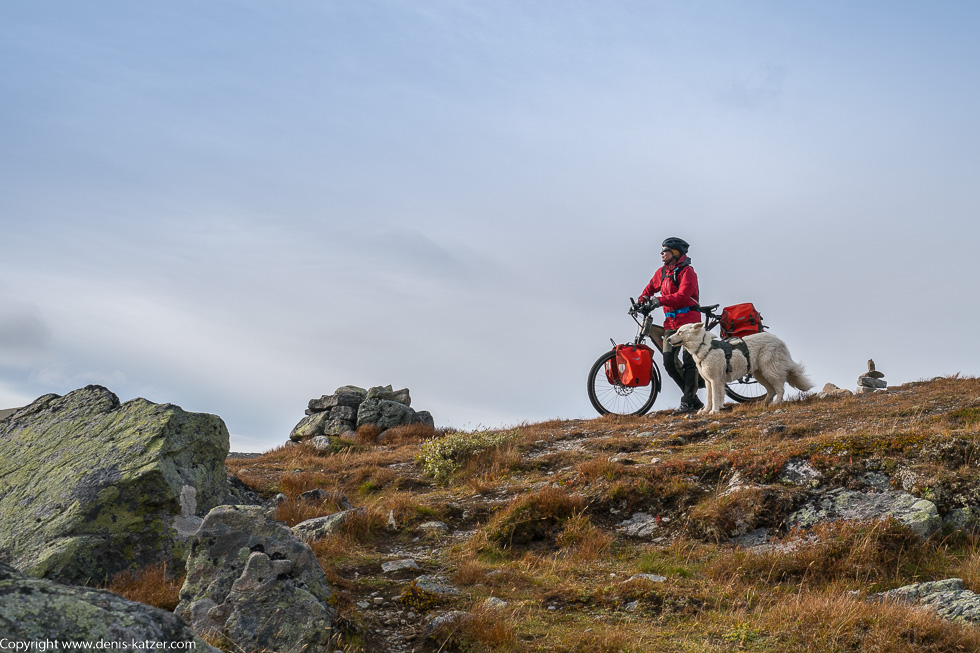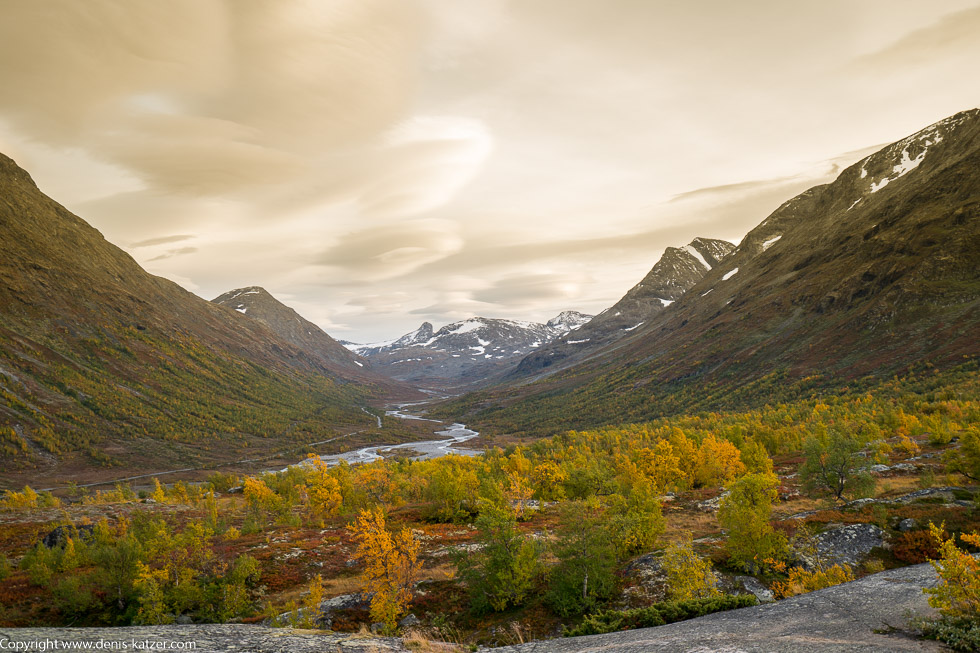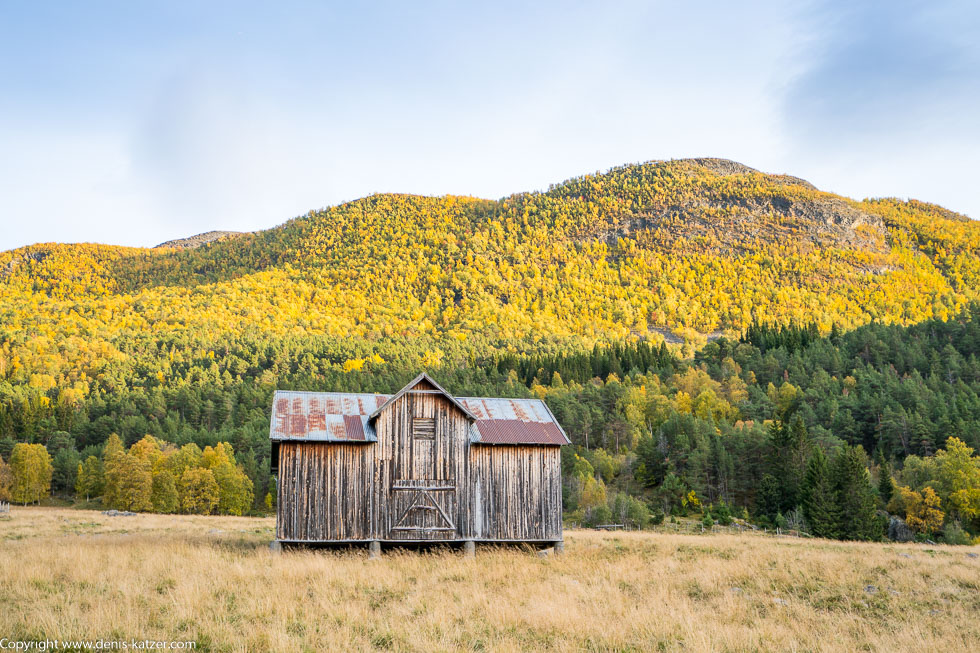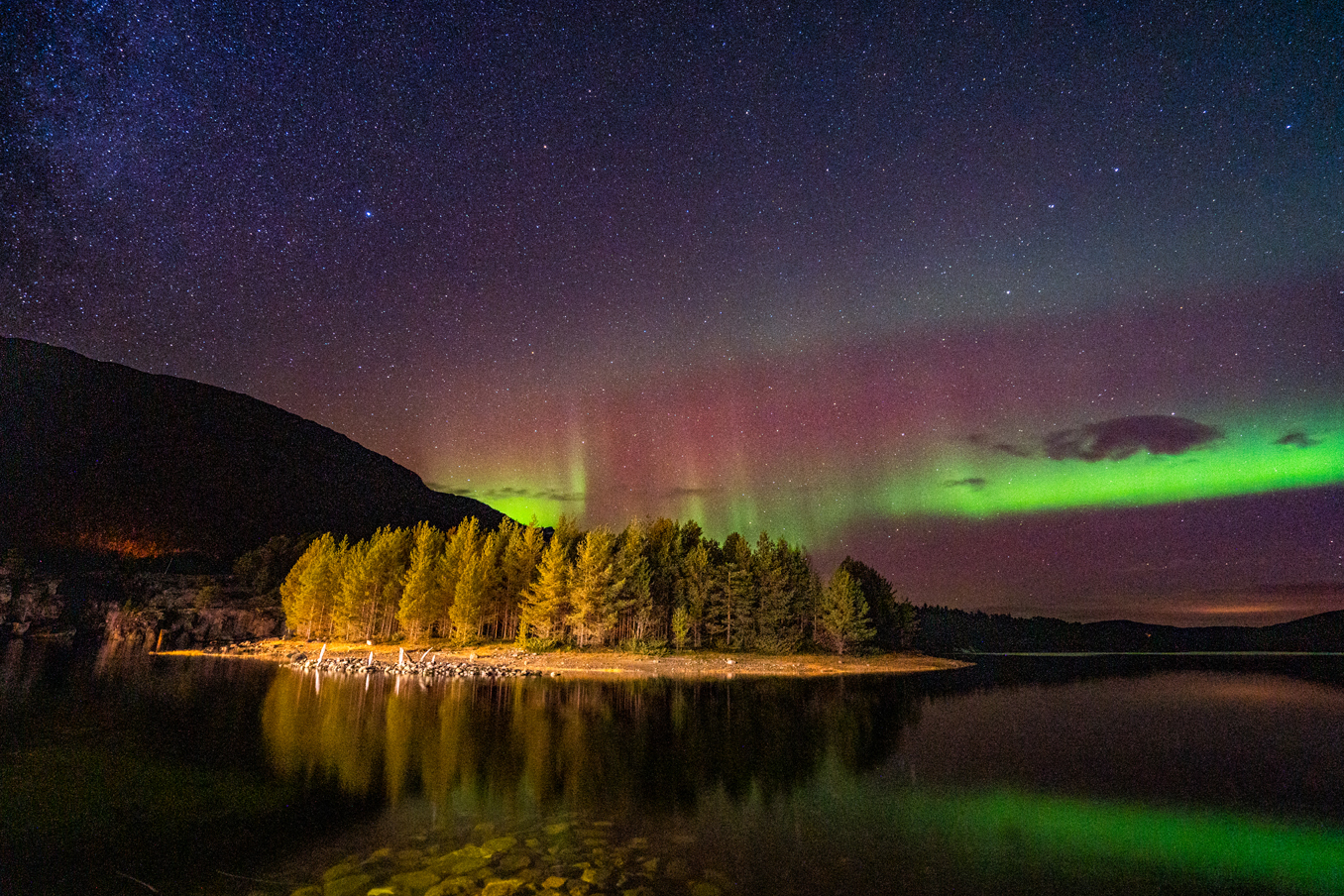
By e-bike over Europe’s largest continental glacier
N 61°50'13.9'' E 008°34'08.3''
Date:
17.09.2020 until 18.09.2020
Day: 046 – 047
Country:
Norway
Location:
Lom
Daily kilometers:
89 km
Total kilometers:
3708 km
Soil condition:
Asphalt
Ferry
0
Bridge crossings:
1
Tunnel passages:
0
Sunrise:
06:51 a.m. – 06:54 a.m.
Sunset:
7:50 pm – 7:46 pm
Temperature day max:
17°
Night temperature min:
11°
Departure:
11:30
Arrival time:
19:30
(Photos of the diary entry can be found at the end of the text).
Click here for the podcasts!
Link to the current itinerary
(For more posts click on one of the flags in the map)
We park our Terra Love, which has clocked up 40,000 kilometers of travel and expeditions under its rough off-road tires in the two years since it came into our lives, on a strip of gravel next to the track. “A good place to unpack the bikes,” I say. Because a strong, cold wind is blowing around our ears at an altitude of around 1,400 meters, we slip into warm woollen underwear and put on a woollen fleece, a thin down jacket and a down vest. “Should be enough,” I say confidently. Before we leave the Terra to get ready for a day on the e-bike in the extreme landscape, we put on a Komperdell back protector. It’s a new achievement that should give us more safety after I’ve been injured in falls over the last few years. I unload the Superdelites from Riese und Müller from the box specially built for them, which hangs on the Terra like a rucksack. While Tanja loads the saddlebags and clicks the four 500 watt Intube Bosch batteries into the frames, I straighten the handlebars, screw on the pedals and attach the GPS, the GoPro and the Bosch computer to the mounts provided.
An hour later we are ready to go. “Let’s go Ajaci!” I say, whereupon our dog jumps into his trailer howling with joy. “Yay! Yay!”, we cheer as we sit in the saddle again and let our tires roll over one of the most beautiful mountain passes in the world. Just 100 meters after we set off, I let my bike train glide into a dip for a few hundred meters, lean into the first bend and have to make an effort not to get carried away by the rush of speed. The suspension absorbs the bumps in the asphalt without any problems, absorbing every bump just like a motorcycle. It’s a dream to hammer down the pass road on such a robust high-tech machine, which my bike is. Despite the heavy load, it stays exactly on track and does not start to lurch. This also poses a danger, as I don’t notice the constantly increasing speed. The dog trailer built especially for Ajaci is also lying flat on the road. “A good design,” a thought flashes through my brain. “Not so fast!” Tanja’s voice warns me, which I hear clearly through the speaker of our modern Sena smart helmet. “I’ll be careful,” my reply is transmitted to Tanja’s helmet via intercom. (Voice transmission by means of electrical signals) “It’s crazy what fantastic advantages modern technology offers,” it goes through my head, as we could only have dreamed of helmet-to-helmet voice transmission on our last e-bike expedition from Russia to Thailand. To keep the speed under control, I have to put my foot down, or rather pull on the brake levers. Hard work for our Magura brakes. Under such tough conditions, the disc brakes guarantee us the necessary safety to reliably slow down the weight of 220 kg including my body, the dog trailer and our 35 kg dog from 50 km/h to 10 km/h in a short time. In some sections of the pass route, it even takes 10 or 20 minutes. The brake discs do not burn out and the braking performance is maintained at one hundred percent. “You’re so fast! Can you see what a fantastic landscape we’re driving through?” comes the voice signal from the helmet loudspeaker. “You’re right. I got caught up in the rush of speed and almost forgot where we were,” I admit.
Once we reach 1200 m, we work our way up again. To the left and right, in front of and behind us, rise the mountains over which the Josdedalsbreen, Europe’s largest continental glacier, arches with its 28 outlet glaciers, whose freshwater content corresponds to around 300,000 million bathtubs filled with water, i.e. the water consumption of Norway in 100 years.
The narrow road winds its way over and through the home of the glaciers, as the Norwegians call the province of Vestland north of the Sognefjord. We cross mountain ranges and high valleys. Being able to travel here is a gift, a highlight of our travel life. Snow and ice fields duck into crevices and oversized hollows. The north side of the imposing rugged mountains is white except for a few dark rocky outcrops. To our left and right, long poles are placed at regular intervals to show us where the road is in the event of snowfall. A cold gust catches us from the side, blowing into the aluminum frame of my Superdelite, which howls briefly. “I don’t want to be out here in winter,” I think to myself, because in some winters the total amount of snow that falls is said to be up to 12 meters.
The main glacier, which we cannot see from here, has a 500 m thick layer of ice, a length of about 40 km and is about 15 km wide in a south-westerly direction. “It would be great if we could hike up to Jostedalsbreen tomorrow,” I say into the helmet microphone. “If you still want to go to the Geirangerfjord, the Trollstigen, Lofoten, the Vesterålen archipelago, photograph sperm whales and the Northern Lights, the island of Senja and the North Cape, that’s a bit much. Don’t you think?” “Yes, then it’s possible that winter will catch up with us before we reach the North Cape,” I snort, pedaling on. “And we don’t have any snow chains with us.” “Unfortunately not,” I reply, as the delivery time was quite long due to Corona and the chains wouldn’t have arrived before we left. “You can’t have everything,” I hear Tanja snort. So we cancel the visit to the glacier, which is dominated by the 1713 m high peaks of Suphellenipa and the 2083 m high Lodalskåpa. We enjoy this fantastic tour through the mountains and valleys covered by gigantic, sometimes bluish shimmering ice masses.
“Wooouuuu!”, Ajaci howls with joy as we enter another valley. Then the road spirals up into the sky again, a sky that is constantly changing with its racing bands of cloud. Every now and then a ray of sunshine steals through to send us a little warmth. Because we now have two 500 watt Bosch batteries in our new Superdelites, i.e. 1000 watts per bike, we can allow ourselves the luxury of riding in turbo mode. At around 20 km/h, we reach an altitude of 1400 meters again. Due to Corona and the time of year, the pass road is only used by a few cars, which is why we are completely alone. Without a care in the world, we stop, place our bikes on the asphalt, take a few photos and continue pedaling uphill. I enjoy the quiet whirring of the powerful Bosch motor (New Performance CX), which tirelessly transfers the energy from the batteries to the KMC chain, which, according to the manufacturer, has a range of no less than 10,000 km. To our left and right, short green grass grows between the rocks and coarse stones, which in many places is covered with a kind of heather that is golden yellow, sometimes slightly reddish in color. “What about your range?” I radio through to Tanja. “Still 70 km to go.” “Fantastic, if we turn back in 20 km, we should still have enough energy left in the batteries,” I suggest. “Good idea,” it sparks from the small helmet loudspeakers.
Suddenly the road climbs steeply again, forcing me to downshift. Clack, clack, clack, the Rohloff gearbox jumps into the right gear. “It’s great how this rear derailleur works even under heavy load,” I think, because it has never let us down in the past 40,000 km of cycling.
You might think at this point, “Aha, now he has to write a hymn of praise to his sponsors”, but far from it. So far, I am delighted with the fantastic quality that our partner companies have equipped us with. This is world class and is largely responsible for the joy we get from being able to explore and discover Mother Earth for ourselves in this way.
Shortly before our turning point, the mountain landscape changes. The rugged rock faces and mountain ranges covered in ice and snow are replaced by gentler hills. Golden-yellow deciduous forests stretch across their backs and stretch out before us into seeming infinity. The up and down of my thighs and my steady breathing put me in a kind of trance, where I could glide along like this for hours. “We should turn back!” Tanja’s announcement startles me. “You’re right,” I reply, pulling the brakes.
In the late afternoon, as the sun starts to hide behind the mountain giants, the wind picks up and a bad weather front announces itself, we reach our mobile home with 20% energy left in the second battery. “It was a great trip,” I say. “Absolutely,” Tanja replies with a laugh. Our bikes and equipment are quickly stowed in the Terra Love, which sways considerably under the gusts of wind, which can reach speeds of up to 100 km/h. “Let’s get out of here,” I say, turn the ignition key, put the car into first gear and follow the route we had just covered on our e-bikes…
